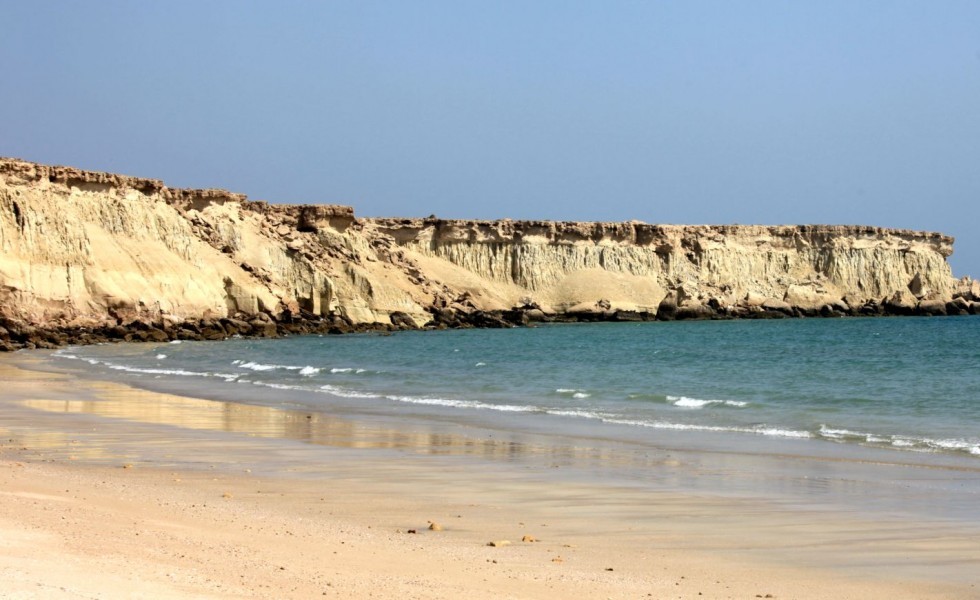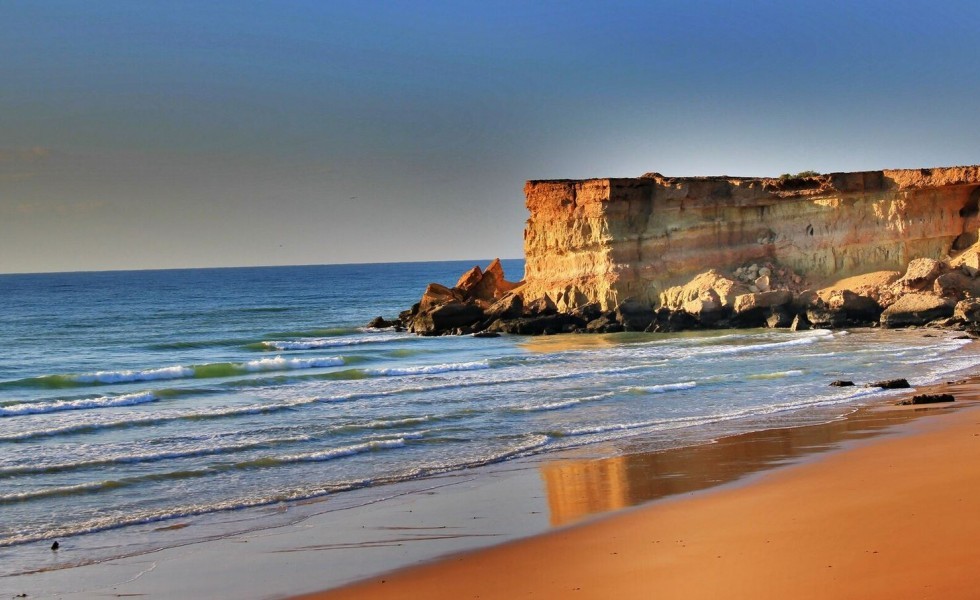Search for cities, countries, lakes and rivers
Iran

Iran © By ninara
Iran Sea Temperature
This page provides detailed information about the water temperature in Iran. All countries, cities and resorts on the coast. The range of sea temperatures for today. We find every spot where you can swim and tell you what the water temperature is there today and throughout the year.
Current Sea Temperature
22.5°C
minimal
26.8°C
average
28.7°C
maximum
Graph of Sea Temperature Changes in Iran Over the Last 60 Days
The Warmest Places on the Seaside in Iran Today
The Most Popular Seaside Resorts in Iran
Seas and Oceans that Border Iran

Iran © By Sahehco
Water Temperature in Iran: General Trends and Swimming Opportunities
Iran, located on the southern edge of the Persian Gulf and the Caspian Sea, offers a variety of swimming opportunities, though the water temperatures vary depending on the region and the season. The Persian Gulf, which borders Iran's southern coastline, generally has warm waters, with temperatures ranging from 19°C (66°F) in the winter months to 30°C (86°F) during the summer. This makes the Gulf an attractive destination for swimming, especially during the cooler months when the weather is less intense. Popular coastal areas like Bushehr and Kish Island are well known for their clear, warm waters, which are suitable for swimming, water sports, and snorkeling.
In contrast, the Caspian Sea to the north of Iran has cooler waters, especially along the Iranian coastline. The temperature of the Caspian Sea can range from 16°C (61°F) in the winter to 27°C (81°F) in the summer, making it a more moderate destination for swimming. The Caspian Sea is also less salty than the Persian Gulf, which can make swimming in these waters feel different. Cities like Bandar Anzali and Chalus along the Caspian coast are popular spots for beachgoers looking for a more relaxed swimming experience, as the freshwater lakes and beaches offer a pleasant atmosphere for families and tourists.
While both the Caspian Sea and the Persian Gulf offer opportunities for swimming, the infrastructure for beach tourism is not as developed in Iran as in other regions, making many of the coastal areas quieter and less commercialized. Nonetheless, these areas provide scenic beauty, warm waters, and an opportunity for swimming in a relatively peaceful environment. Visitors to Iran's coastline can enjoy a mix of both warm oceanic swims and calmer freshwater experiences, depending on their location and preferences.
General Information and Geographical Location of Iran
Original name of the country: Jomhuri-ye Eslâmi-ye Irân
Iran is located in the Middle East. The country is washed by the Persian Gulf. Iran is a small country. To determine the temperature of the water in it, we track only five settlements. Link to Google Maps.
Iran Weather
Iran has a diverse climate due to its vast size and varied topography, ranging from arid deserts to lush coastal regions. Most of the country experiences a dry, continental climate with hot summers and cold winters. In central and southern regions, summer temperatures can soar above 110°F (43°C), while winter nights in the deserts can drop below freezing. The northern regions along the Caspian Sea, however, have a more temperate climate with higher humidity and milder temperatures. The Zagros and Alborz mountain ranges also contribute to regional climate differences, often bringing heavy snowfall in winter.
Precipitation levels vary significantly across Iran. The western and northern parts receive the most rainfall, particularly in the Caspian coastal areas, which can get over 60 inches (1500 mm) of rain annually. In contrast, the central deserts, such as the Dasht-e Kavir and Dasht-e Lut, are among the driest places on Earth, with less than 4 inches (100 mm) of annual rainfall. Spring and autumn are generally the most pleasant seasons, with moderate temperatures ranging from 60–80°F (15–27°C), making them the best times for travel.
Frequently Asked Questions About Iran and its Water Temperatures
What is the sea temperature today on the coast of Iran?
The sea temperature today on the coast of Iran ranges from from 73°F (22.5°C) in Bender Khomeini to 84°F (28.7°C) in Kish Island.
Which seas and oceans border Iran?
Iran is bordered only by the Persian Gulf.
How long is the coastline in Iran?
According to The World Factbook, the length of Iran's coastline is 1,516 miles (2,440 km), while the World Resources Institute estimates it at 3,660 miles (5,891 km).
What is the best time for swimming and beach holidays on the coast of Iran?
The coastline of Iran is quite extensive, so the sea temperature varies significantly. However, if we talk about average values, there are ten months in a year when you can comfortably swim in the sea: From March to December. During this time, the average water temperature is always above 68 degrees Fahrenheit (20 degrees Celsius).
What is the sea temperature history in Iran?
Here are the ranges of sea temperatures in Iran by month based on historical data: in January from 57°F (14°C) to 78°F (26°C), in February from 57°F (14°C) to 78°F (26°C), in March from 59°F (15°C) to 82°F (28°C), in April from 62°F (17°C) to 86°F (30°C), in May from 71°F (22°C) to 89°F (32°C), in June from 77°F (25°C) to 91°F (33°C), in July from 77°F (25°C) to 95°F (35°C), in August from 77°F (25°C) to 96°F (36°C), in September from 77°F (25°C) to 95°F (35°C), in October from 68°F (20°C) to 91°F (33°C), in November from 66°F (19°C) to 87°F (31°C), in December from 59°F (15°C) to 84°F (29°C).
